University of Buenos Aires
| Universidad de Buenos Aires | |
|
Seal of the University of Buenos Aires | |
| Motto | Argentum virtus robur et studium (Latin) |
|---|---|
Motto in English | Argentine virtue is strength and study |
| Type | Public |
| Established | 1821 |
| Budget | US$700,000,000 (2015)[1] |
| Rector | Dr. Alberto Barbieri |
Academic staff | 28,943 (2004)[2] |
| Students | 311,175 (2004)[3] |
| Undergraduates | 297,639 (2004) |
| Postgraduates | 13,536 (2004) |
| Location | Buenos Aires, Argentina |
| Campus | Urban |
| Colors | |
| Website | www.uba.ar |
The University of Buenos Aires (Spanish: Universidad de Buenos Aires, UBA) is the largest university in Argentina and the second largest university by enrollment in Latin America. Founded on August 12, 1821 in the city of Buenos Aires, it consists of 13 departments, 6 hospitals, 10 museums and is linked to 4 high schools: Colegio Nacional de Buenos Aires, Escuela Superior de Comercio Carlos Pellegrini, Instituto Libre de Segunda Enseñanza and Escuela de Educación Técnica Profesional en Producción Agropecuaria y Agroalimentaria.
Entry to any of the available programmes of study in the university is open to anyone with a secondary school degree; in most cases, students who have successfully completed high school must pass a first year called CBC, which stands for Ciclo Básico Común (Common Basic Cycle). Only upon completion of this first year may the student enter the chosen school; until then, they must attend courses in different buildings, and have up to 3 years to finish the 6 or 7 subjects (which vary depending on the programme of study chosen) assigned in two groups of 3 or 4. Each subject is of one semester duration (March–July or August–November). If someone passes all 6 subjects in their respective semester, the CBC will take only one year. Potential students of economics, instead, take a 2-year common cycle, the "CBG" (General Basic Cycle), comprising 12 subjects.
The UBA has no central campus. A centralized Ciudad Universitaria (literally, "university city") was started in the 1960s, but contains only two schools, with the others at different locations in Buenos Aires.
Access to the university is free of charge for everyone, including foreigners. However, the postgraduate programs charge tuition fees that can be covered with research scholarships for those students with outstanding academic performance.
The university has produced four Nobel Prize laureates, one of the most prolific institutions in the Spanish-speaking world. According to the QS World University Rankings (2015/16) the University of Buenos Aires ranked number 124th in the world and, according to Top Universities, it is the 46th best university in the world taking into account employer reputation.[4]
Schools

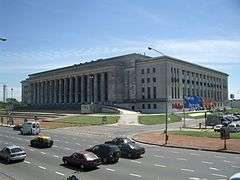
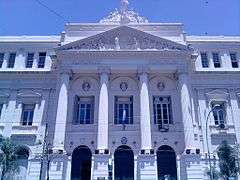
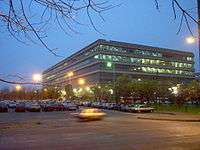
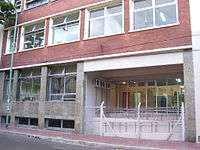
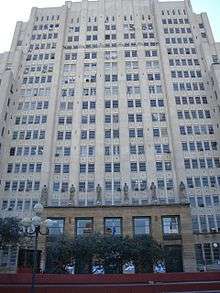



The schools that comprise the university are:
- Ciclo Básico Común
- Facultad de Psicología (psychology)
- Facultad de Ingeniería (engineering)
- Facultad de Odontología (dentistry)
- Facultad de Farmacia y Bioquímica (pharmacy and biochemistry)
- Facultad de Filosofía y Letras (philosophy and literature)
- Facultad de Derecho (law)
- Facultad de Medicina (medicine)
- Facultad de Ciencias Sociales (social sciences)
- Facultad de Veterinaria (veterinary medicine)
- Facultad de Agronomía (agronomy)
- Facultad de Ciencias Económicas (economics)
- Facultad de Ciencias Exactas y Naturales (exact science and natural science)
- Facultad de Arquitectura, Diseño y Urbanismo (architecture, design and urbanism)
Of these, only the last two have their buildings located in Ciudad Universitaria, a campus-like location in Núñez, in northern Buenos Aires. The others are scattered around the city in buildings of various sizes, with some having more than one building. There are projects to move more schools to Ciudad Universitaria, the first one in order of importance is the School of Psychology, whose building is already designed to be placed on this Campus.
Rankings
| University rankings | |
|---|---|
| Global | |
| ARWU[5] | 151-200 category [6] |
| QS[7] | 85 [8] |
| Latin America | |
| QS[9] | 11 [10] |
There are no existing Argentinian or Latin-American university ranking systems, but several international rankings have ranked the University of Buenos Aires (UBA). The reputed Academic Ranking of World Universities (ARWU), also known as the Shanghai Ranking ranked UBA not only above all other Argentinian universities but all other Latin-American ones.[6] The QS World University Rankings ranks UBA in the 85th place, above all other Spanish or Portuguese speaking universities (American and European) in its worldwide ranking [8] but relegates it to the 11th place in its Latin-American ranking.[10]
Notable alumni
- Che Guevara, revolutionary leader
- Esther Hermitte, anthropologist
- Alejandro Bulgheroni, oil billionaire[11]
- Juan Cabral, film director
- Alberto Prebisch, architect
- Raul Prebisch, economist
- Teresa Ratto, physician
- Luis Agote, physician
- Salvador Maciá, physician and politician
- Inés Mónica Weinberg de Roca, lawyer, former Judge at the International Criminal Tribunal for Rwanda
- Juan Rosai, physician, Italian-born American surgical pathologist
- Luis Moreno-Ocampo, lawyer, jurist and Chief Prosecutor of the International Criminal Court
- Julio Cortázar, writer
- José Luis Murature, foreign minister of Argentina
- Richard Tomlinson, former British spy
- Rafael Viñoly, Uruguayan architect
- Diana Agrest, architect and theorist
- Claudio Vekstein, architect specialized in public architecture
- Clorindo Testa, architect and painter
- Patricio Pouchulu, architect and educator
- Alberto Calderón, mathematician
- Luis Caffarelli, mathematician
- Teodosio Cesar Brea, lawyer and founder of Allende & Brea
- Primarosa Chieri, geneticist
The following former students and professors of the university have received the Nobel Prize:
- Carlos Saavedra Lamas, Peace, 1936.
- Adolfo Pérez Esquivel, Peace, 1980.
- Bernardo Houssay, Physiology, 1947.
- Luis Federico Leloir, Chemistry, 1970.
- César Milstein, Medicine, 1984.
The following Presidents of Argentina have earned their degrees at the university:
- Carlos Pellegrini (1890–1892, National Autonomist Party), lawyer.
- Luis Sáenz Peña (1892–1895, National Autonomist Party), lawyer.
- Manuel Quintana (1904–1906, National Autonomist Party), lawyer.
- Roque Sáenz Peña (1910–1914, National Autonomist Party), lawyer.
- Victorino de la Plaza (1914–1916, National Autonomist Party), lawyer.
- Hipólito Yrigoyen (1916–1922 and 1928–1930, Radical Civic Union), lawyer.
- Marcelo Torcuato de Alvear (1922–1928, Radical Civic Union), lawyer.
- Agustín Pedro Justo (1932–1938, "Concordancia" (UCR and PAN)), engineer.
- Roberto Marcelino Ortiz (1938–1942, "Concordancia" (UCR and PAN)), lawyer.
- Ramón Castillo (1942–1943, "Concordancia" (UCR and PAN)), lawyer.
- Arturo Frondizi (1958–1962, Intransigent Radical Civic Union), lawyer.
- Arturo Umberto Illia (1963–1966, People's Radical Civic Union), physician.
- Raúl Alfonsín (1983–1989, Radical Civic Union), lawyer.
- Adolfo Rodríguez Saá (2001, Justicialist Party), lawyer.
- Eduardo Duhalde (2002–2003, Justicialist Party), lawyer.
Deans
- Dr. Antonio Sáenz 13-06-1821 to 25-07-1825.
- Dr. José Valentín Gómez 10-04-1826 to 23-08-1830.
- Dr. Santiago Figueredo 23-08-1830 to 22-02-1832.
- Dr. Paulino Gari 13-12-1832 to 11-1849.
- Dr. Miguel García 11-1849 to 26-06-1852.
- Dr. José Barros Pazos 01 -07-1852 to 5-05-1857.
- Dr. Antonio Cruz Obligado 9-05-1857 to 03-1861.
- Dr. Juan María Gutiérrez 1-04-1861 to 3-10-1873.
- Dr. Vicente Fidel López 15-02-1874 to 12-06-1877.
- Dr. Manuel Quintana 12-06-1877 to 26-01-1881.
- Dr. Eufemio Uballes 1-03-1906 to 1-03-1922.
- Dr. José Arce 1-03-1922 to 1-03-1926.
- Dr. Ricardo Rojas 2-03-1926 to 1-03-1930.
- Dr. Enrique Butty 1-03-1930 to 11-12-1930.
- Dr. Benito Nazar Anchorena (interventor) 16-12-1930 to 1-06-1931.
- Dr. Mariano Castex 1-06-1931 to 9-03-1932.
- Dr. Ángel Gallardo 11-05-1932 to 9-04-1934.
- Dr. Vicente Gallo 11-05-1934 to 11-05-1941.
- Dr. Coroliano Alberini 12-05-1941 to 16-10-1941.
- Dr. Carlos Saavedra Lamas 17-10-1941 to 30-07-1943.
- Dr. Alfredo Labougle (vice-rector) 31-07-1942 to 1-11-1943.
- Dr. Emilio Ravignani (interventor) 2-11-1943 to 4-11-1943.
- Dr. Tomás Casares (interventor) 4-11-1943 to 9-03-1944.
- Dr. David Arias (interventor) 10-03-1944 to 18-05-1944.
- Dr. Carlos Obligado (interventor) 19-05-1944 to 31-08-1944.
- Dr. Nicolás Matienzo (gen. secretary at charge) 1-09-1944 to 30-10-1944.
- Dr. Carlos Waldorp (interventor) 30-10-1944 to 16-02-1945.
- Dr. Antonio Benítez (national commissioner) 17-02-1945 to 14-03-1945.
- Dr. Salvador Oría (vice-rector) 15-03-1945 to 26-04-1945.
- Dr. Horacio Rivarola 27-04-1945 to 2-05-1946.
- Dr. Nicolás Matienzo (gen. secretary at charge) 2-05-1946 to 2-05-1946.
- Dr. Oscar Ivanissevich (interventor) 4-05-1946 to 5-06-1949.
- Dr. Fernando Bustos (vice-rector interventor) 6-08-1946 to 2-09-1946.
- Dr. Agustín Nores Martínez (by the interventor's delegation) 3-09-1946 to 20-09-1946.
- Dr. Fernando Bustos (vice-rector interventor) 21-09-1946 to 24-01-1947.
- Ing. Agr. Carlos Emery (vice-rector interventor) 3-02-1947 to 19-08-1947.
- Arq. Julio Otaola (vice-rector interventor) 20-08-1947 to 5-06-1949.
- Arq. Julio Otaola 6-06-1949 to 12-06-1952.
- Dr. Carlos Bancalari 13-06-1952 to 16-10-1953.
- Dr. José Fernández Moreno (vice-rector) 17-10-1953 to 3-11-1953.
- Dr. Jorge Alberto Taiana 4-11-1953 to 3-06-1955.
- Dr. Ernesto Crámer 4-06-1955 to 31-07-1955.
- Dr. Ernesto Cholvis 1-08-1955 to 26-09-1955.
- Provisory Government Board (FUBA) 27-09-1955 to 30-09-1955.
- Dr. José Luis Romero 1-10-1955 to 31-12-1955.
- Ing. José Babini 1-01-1956 to 19-02-1956.
- Dr. Alejandro Ceballos 5-05-1956 to 27-12-1957.
- Dr. Risieri Frondizi 27-12-1957 to 28-12-1962.
- Dr. Julio Olivera 28-12-1962 to 18-03-1965.
- Ing. Hilario Fernández Long 26-03-1965 to 29-07-1966.
- Dr. Luis Botet 11-08-1966 to 7-02-1968.
- Dr. Raúl Devoto 7-02-1968 to 24-07-1969.
- Dr. Andrés Santas 25-07-1969 to 21-07-1971.
- Dr. Bernabé Quartino 22-07-1971 to 29-01-1973.
- Dr. Carlos Alberto Durrieu 29-01-1973 to 30-05-1973.
- Dr. Rodolfo Puiggrós (interventor) 29-05-1973 to 2-10-1973.
- Ing. Enrique Martínez (interventor) 7-09-1973 to 2-10-1973.
- Lic. Ernesto Villanueva 4-10-1973 to 28-03-1974.
- Dr. Vicente Solano Lima 28-03-1974 to 25-07-1974.
- Dr. Raúl Federico Laguzzi 25-07-1974 to 17-09-1974.
- Dr. Alberto Ottalagano (interventor) 17-09-1974 to 26-12-1974.
- Eduardo Mangiante 27-08-1975 to 12-02-1976.
- Dr. José Alocén 12-02-1976 to 24-03-1976.
- Cap.Navío De Edmundo E. Said 29-03-1976 to 6-08-1976.
- Ing. Alberto Costantini 6-08-1976 to 14-09-1976.
- Dr. Sol Rabasa 14-09-1976 to 25-02-1977.
- Dr. Luis Carlos Cabral 25-02-1977 to 31-08-1978.
- Dr. Alberto V. Donnes 31-08-1978 to 23-11-1978.
- Dr. Lucas Lennon 24-11-1978 to 20-11-1981.
- Dr. Alberto V. Donnes 20-11-1981 to 28-12-1981.
- Dr. Alberto Rodríguez Varela 28-12-1981 to 23-12-1982.
- Dr. Carlos Segovia Fernández 27-12-1982 to 23-12-1983.
- Dr. Francisco Delich 26-12-1983 to 19-03-1985.
- Dr. Oscar Julio Shuberoff 19-03-1985 to 06-05-2002.
- Dr. Guillermo Jaim Etcheverry 07-05-2002 to 07-05-2006.
- Arq.Berardo Dujovne (acting) 08-05-2006 to 15-05-2006.
- Dr. Alfredo Buzzi (acting) 16-05-2006 to 29-05-2006.
- Dr. Alberto Boveris (acting) 29-05-2006 to 31-05-2006
- Med. Vet.Aníbal Franco (vice-rector) 31-05-2006 to 12-12-2006.
- Dr. Alfredo Buzzi (acting) 12-12-2006 to 18-12-2006.
- Méd. Vet. Rubén E. Hallú 18-12-2006 to 4-12-2013.
- Prof. Dr. Alberto Edgardo Barbieri 5-12-2013 to 2018.
Gallery of notable alumni
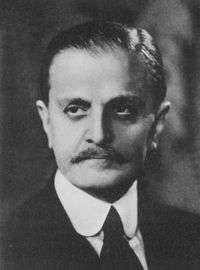 Carlos Saavedra Lamas, Nobel Peace Prize, 1936.
Carlos Saavedra Lamas, Nobel Peace Prize, 1936.- Bernardo Houssay, Nobel Prize in Medicine, 1947.
 Luis Federico Leloir, Nobel Prize in Chemistry, 1970.
Luis Federico Leloir, Nobel Prize in Chemistry, 1970.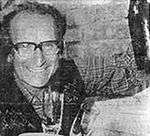 César Milstein, Nobel Prize in Medicine, 1984.
César Milstein, Nobel Prize in Medicine, 1984. Ernesto "Che" Guevara, marxist leader.
Ernesto "Che" Guevara, marxist leader.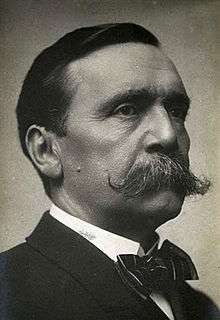 Carlos Pellegrini, president 1890-1892.
Carlos Pellegrini, president 1890-1892. Luis Sáenz Peña, president 1892-1895.
Luis Sáenz Peña, president 1892-1895. Manuel Quintana, president 1904-1906.
Manuel Quintana, president 1904-1906. Victorino de la Plaza, president 1914-1916
Victorino de la Plaza, president 1914-1916 Ramón S. Castillo, president 1942-1943
Ramón S. Castillo, president 1942-1943 Arturo Frondizi, president 1958-1962
Arturo Frondizi, president 1958-1962 Arturo Umberto Illia, president 1963-1966
Arturo Umberto Illia, president 1963-1966- Adolfo Rodríguez Saá, president 2001
 Eduardo Duhalde, president 2002-2003
Eduardo Duhalde, president 2002-2003
See also
- Argentine university reform of 1918
- List of Argentine universities
- Science and technology in Argentina
References
- ↑ University of Buenos Aires, Budget
- ↑ University of Buenos Aires, 2004 Academic Staff Census
- ↑ University of Buenos Aires, 2004 Student Census
- ↑ University Rankings. Top Universities. Retrieved on 2013-07-17.
- ↑ "Academic Ranking of World Universities: Global". Institute of Higher Education, Shanghai Jiao Tong University. 2016. Retrieved September 8, 2016.
- 1 2 "Academic Ranking of World Universities 2015". Academic Ranking of World Universities 2016. ShanghaiRanking Consultancy. Retrieved 1 September 2016.
- ↑ "QS World University Rankings 2016/17". Quacquarelli Symonds Limited. 2016. Retrieved September 8, 2016.
- 1 2 "QS World University Rankings® 2016". QS Quacquarelli Symonds Limited. 6 September 2016. Retrieved 6 September 2016.
- ↑ "QS Latin University Rankings". QS Quacquarelli Symonds Limited. 2016. Retrieved September 8, 2016.
- 1 2 "QS University Rankings: Latin America 2016". QS Quacquarelli Symonds Limited. Retrieved 1 September 2016.
- ↑ "Alejandro Pedro Bulgheroni". BusinessWeek. Retrieved 9 January 2015.
External links
| Wikimedia Commons has media related to Universidad de Buenos Aires. |
- Official website (Spanish)
- Official website (English)
- Study in Argentina: argentine government website for international students (English)
Coordinates: 34°35′59″S 58°22′23″W / 34.59972°S 58.37306°W

